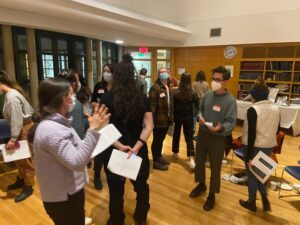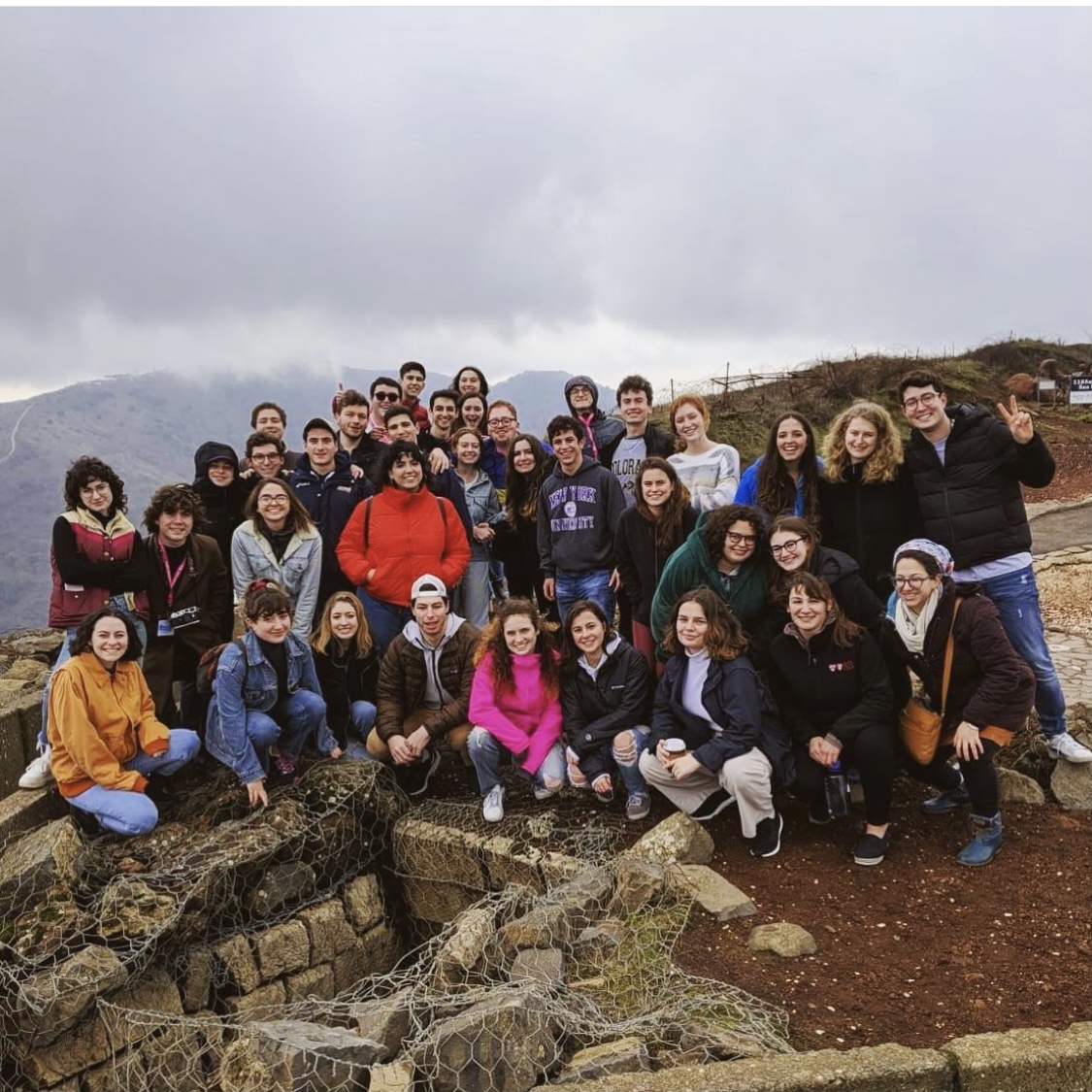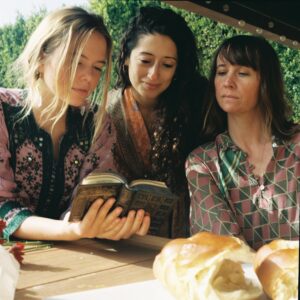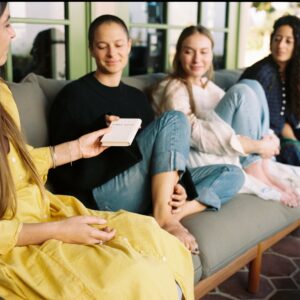While “innovation” often is associated with a spark of an idea that has the power to change the world, real progress—forward motion, sustainable change—requires the effective implementation of those bright ideas.
To bring an idea or program model that has worked in one place somewhere new, sometimes adapting the idea to meet local needs, effective scaling is essential. Why doesn’t this happen more often? Understandably, there’s an excitement that comes with something new. New ideas and innovations are an important part of the social impact equation. But equally as important is the power of amplifying something borrowed.
What if more nonprofit professionals widen the aperture and expand the idea of innovation to include concepts like customizing and adapting proven models too, helping existing great ideas influence more people in more places? With this mindset, we can see how scaling can follow innovation for greater impact.
Ten years after its founding, the Jewish Teen Education & Engagement Funder Collaborative (FC) powered by Jewish Federations of North America—which raises and distributes more than $3 billion annually and through planned giving and endowment programs to support social welfare, social services, and educational needs—is further embracing scaling as an integral strategy. Early on, scaling was baked into the DNA of the funder collaborative, an experiment uniting national and local funders and practitioners to create, nurture, sustain, and scale contemporary approaches to Jewish teen education and growth. Successful ideas and learnings were highlighted and designed to spread across the network of 10 FC communities across the country. The Jim Joseph Foundation, one of the largest philanthropic supporters of Jewish education and engagement nationally, and the funder collaborative have seen impactful programs launched in one community and adapted by another, or brought to a broader audience through the efforts of the collaborative itself. Scaled efforts could be delivered more efficiently, carried less financial risk, and mitigated risks around achieving outcomes.
There are numerous pathways to scale that could work in any demographic, in nearly any engagement or education setting. Any originator (those who first started a program) can help adaptors (those looking to bring an existing program to their community) implement extraordinary programs that are right for them, ultimately advancing their shared goals.
The ‘copycat advantage’
In partnership with Spring Impact, a global organization that specializes in scaling social impact, the funder collaborative developed a methodology for scaling in the Jewish community. This methodology is relevant for other fields, too, and involves five concrete steps the originator of any engagement program can follow:
1) Prove: assessing whether a solution is ready to replicate elsewhere;
2) Design and 3) Systemize: laying the groundwork in a new community and tweaking the existing model if needed;
4) Piloting and 5) Scaling: bringing the model to life in a new setting through operations manuals, trainings, or modules.
Years of Spring Impact’s consulting efforts and the funder collaborative’s experience have shown that this approach works.
In the teen engagement landscape alone, models focused on peer-to-peer engagement, service learning, microgrant programs, and other efforts started in one community and are successfully expanded to others when the program originators share lessons learned and design and implementation information with adaptors. Adaptors can access program models at no cost, with less risk involved than if they were the program creators and first-time implementers. Often, the research, proof of concept, and impact evaluation have already been completed by the time an adaptor decides to bring the program to their community. In some cases, adaptors can opt in to a network of people already running a similar program or initiative for support and brainstorming sessions. As a result, they get to focus on delivering a great product and tailoring it for their audience—often their strength—as opposed to having to focus on developing the product.
The emotional side of scale
Both the funder collaborative and the foundation have learned that scaling requires an embrace of a new mindset: radical generosity.
In the funder collaborative, one community’s success means greater potential success across the network because of a commitment by all communities involved to work together. High-fidelity replication—maintaining the most vital aspects of a model in a scaled version of it—is difficult but worthwhile. Originators must think through how they will share information and provide training and support to others. Adaptors must understand their audience, be willing to learn, and implement the essential elements of the original program model. For originators, effective scaling is about more than sharing models: It’s about adopting a new mindset, skills, and capacity to unpack models with deep learning, toolkits, and trainings. Originators go from being a “doer” to a “teacher,” “ambassador,” or “champion.”
Opportunity to increase impact
Successful scaling requires detailed planning—plus investment. Sometimes the right person to bring an innovation to scale isn’t the originator, and the funder collaborative can step in to help adjust the program for a national audience, amplifying its reach.
As we learned from our partner and mentors at Spring Impact, organizations in different sectors and spaces can take on a leadership role in scaling as well, including investing in scaling of specific organizations. The organization’s Journey to Impact report highlights lessons learned from supporting more than 250 organizations in achieving impact at scale, illustrating the power of embracing the marriage of innovation and scaling.
There are benefits to amplifying new ideas, and there are advantages of scaling existing ideas as an alternative pathway to dramatically increase nonprofits’ collective impact. We believe we hold the potential and tools to help some of the most groundbreaking innovations spread. The Jewish Teen Education & Engagement Funder Collaborative is a resource for any program seeking to extend its impact.
Sara Allen is executive director of the Jewish Teen Education & Engagement Funder Collaborative powered by Jewish Federations of North America. Rachel Shamash Schneider is a program officer at the Jim Joseph Foundation.
originally published in Philanthropy News Digest by Candid
 Jewish educational goals without worrying about experiencing racism. Hebrew classes give members
Jewish educational goals without worrying about experiencing racism. Hebrew classes give members  Adults need the space and “the right folk” to have big conversations together. This is especially true during liminal life moments, when people often engage with IYUN as they are searching, exploring, and seeking meaningful connections. The years when someone leaves their childhood home, for example, but before they set down roots in a new family home, are opportune times to encounter deep jewish living.
Adults need the space and “the right folk” to have big conversations together. This is especially true during liminal life moments, when people often engage with IYUN as they are searching, exploring, and seeking meaningful connections. The years when someone leaves their childhood home, for example, but before they set down roots in a new family home, are opportune times to encounter deep jewish living. Jews asked big questions about their life and purpose, as they sought meaning, community, and connection. Building on the project’s initial success, IYUN’s leaders, Rabbi Daniel Smokler and Erica Frankel, see a unique opening to engage many thousands of adults in big conversations through Torah. This opportunity they say is due in part to the fruits of decades of outstanding work in Jewish education, making the case in thought and practice for the importance of widespread Torah study. Their previous work growing Hillel’s Jewish Learning Fellowship—now on 200+ campuses with over 20,000 alumni—demonstrates that Torah study, once an afterthought among Jewish college students, is an integral part of the Hillel experience. Those college alumni are the adults now ready to lead and engage in Jewish communal life. And IYUN’s leaders are capitalizing on a chance—perhaps once in a generation or more—to reach beyond those who are currently studying and immediately adjacent to the next levels of Jewish life. With this approach, more adults at inflection points will experience new friendships, meaningful space for thought and reflections, and will develop a lasting love engagement with Torah and Jewish life.
Jews asked big questions about their life and purpose, as they sought meaning, community, and connection. Building on the project’s initial success, IYUN’s leaders, Rabbi Daniel Smokler and Erica Frankel, see a unique opening to engage many thousands of adults in big conversations through Torah. This opportunity they say is due in part to the fruits of decades of outstanding work in Jewish education, making the case in thought and practice for the importance of widespread Torah study. Their previous work growing Hillel’s Jewish Learning Fellowship—now on 200+ campuses with over 20,000 alumni—demonstrates that Torah study, once an afterthought among Jewish college students, is an integral part of the Hillel experience. Those college alumni are the adults now ready to lead and engage in Jewish communal life. And IYUN’s leaders are capitalizing on a chance—perhaps once in a generation or more—to reach beyond those who are currently studying and immediately adjacent to the next levels of Jewish life. With this approach, more adults at inflection points will experience new friendships, meaningful space for thought and reflections, and will develop a lasting love engagement with Torah and Jewish life. 

 to meet the moment and provided opportunities for deep connection when it was needed most, including:
to meet the moment and provided opportunities for deep connection when it was needed most, including: